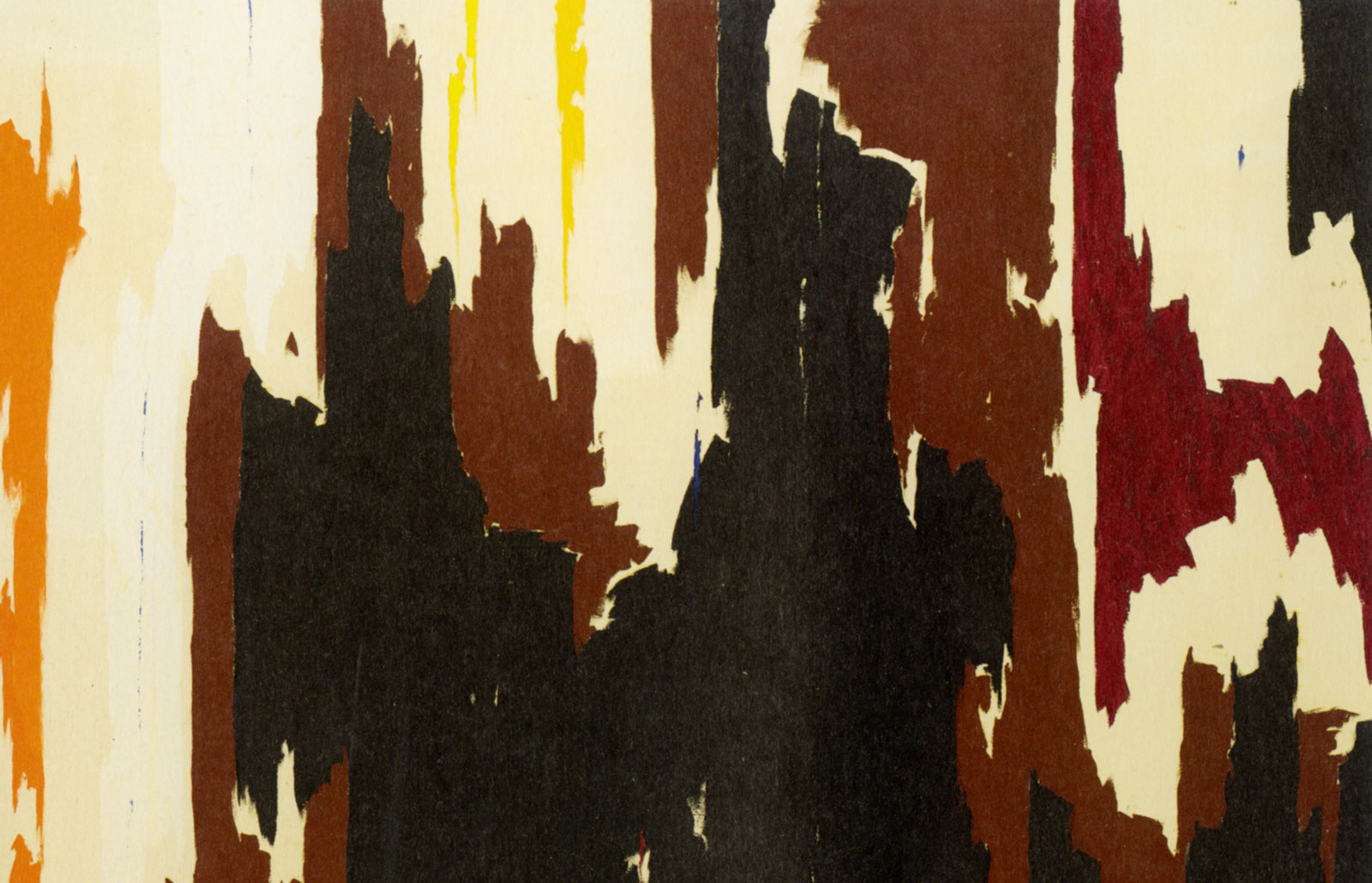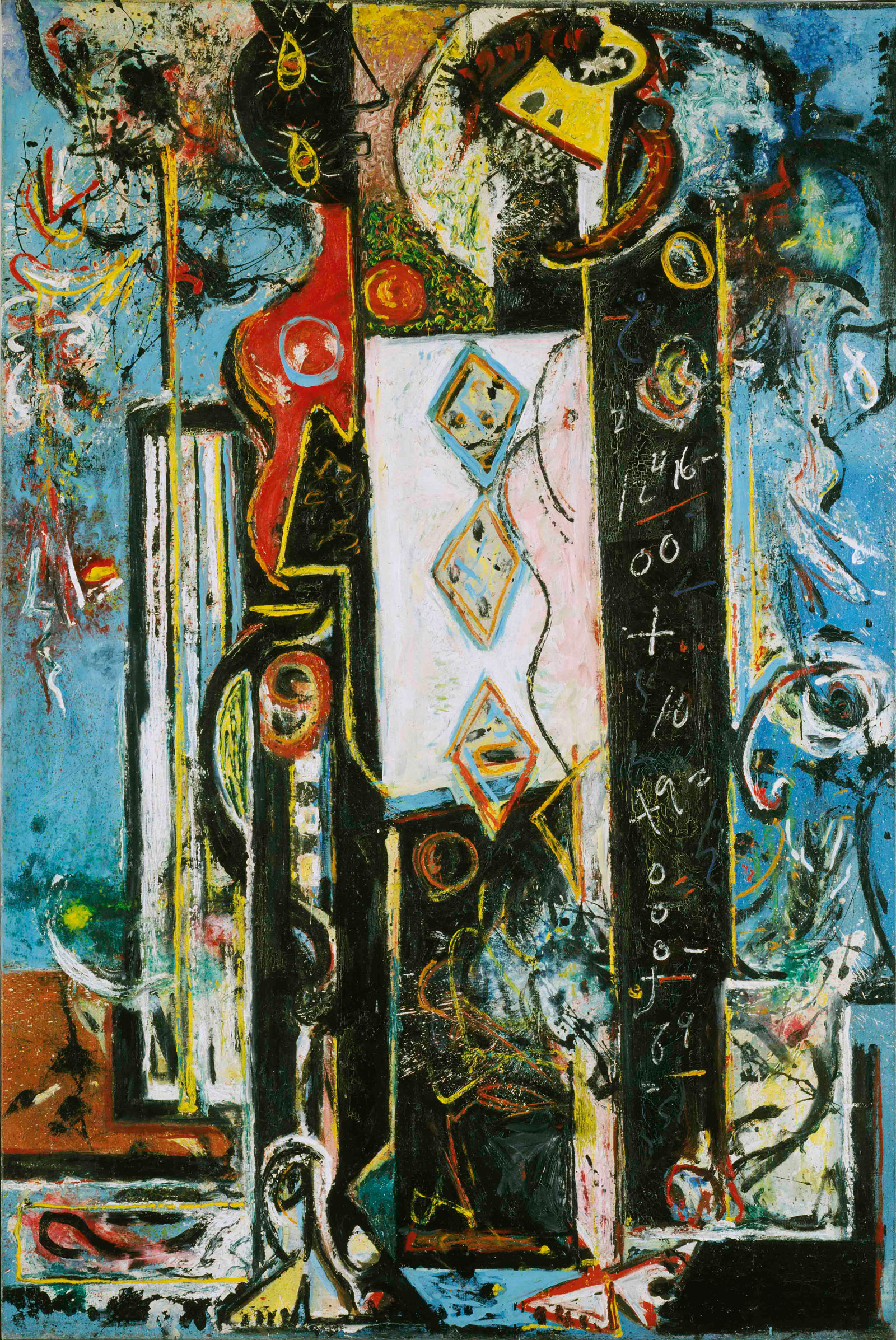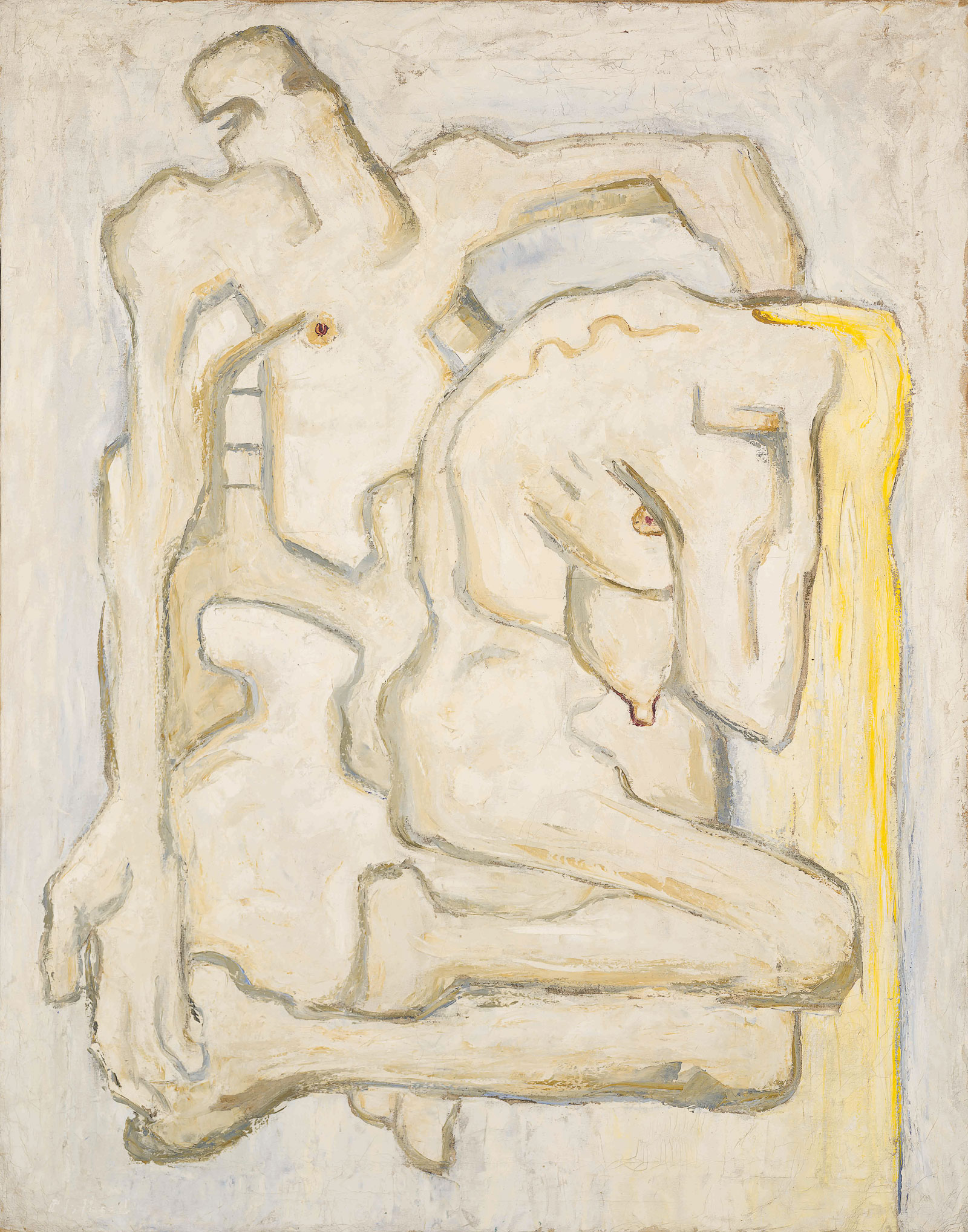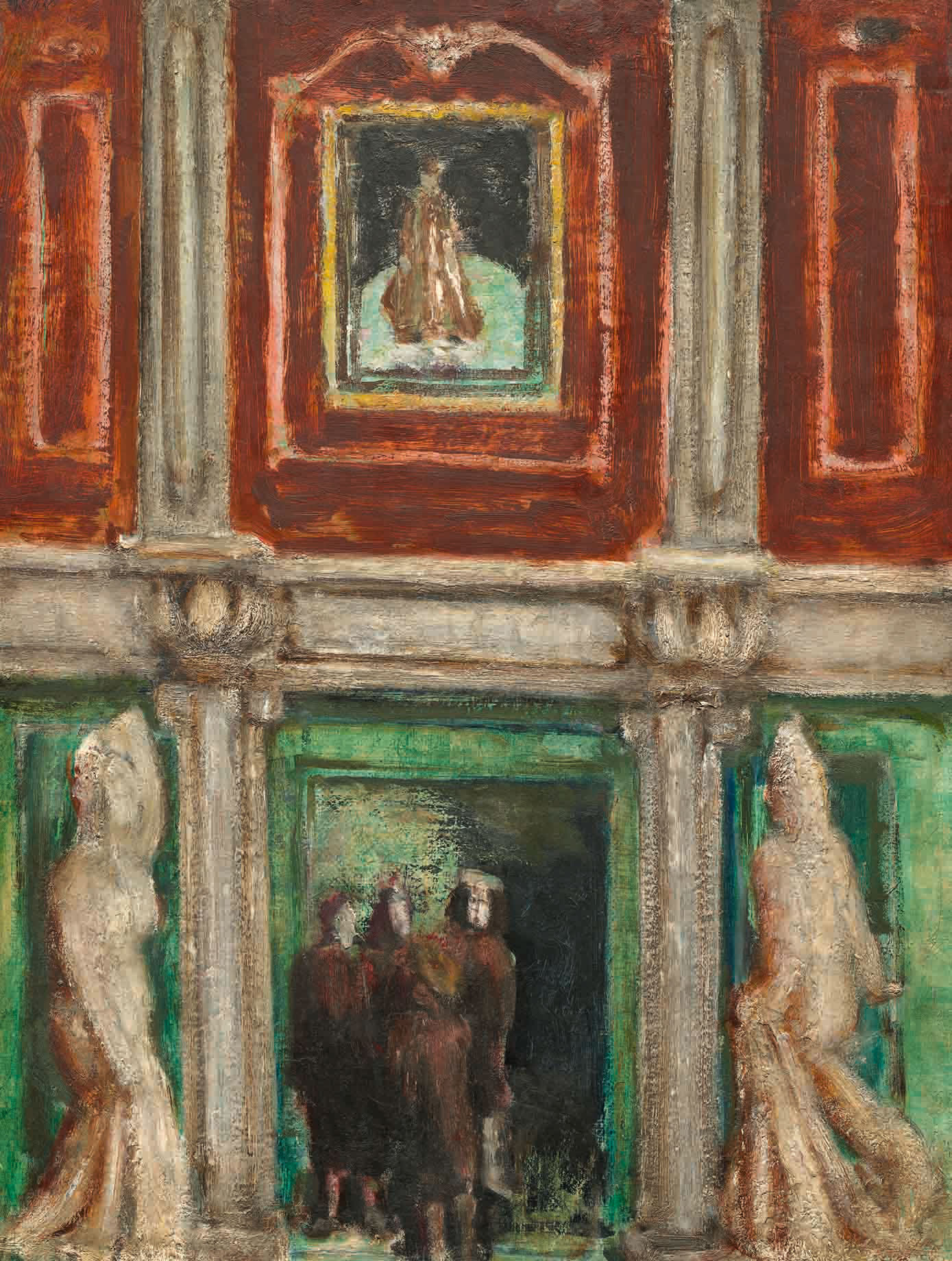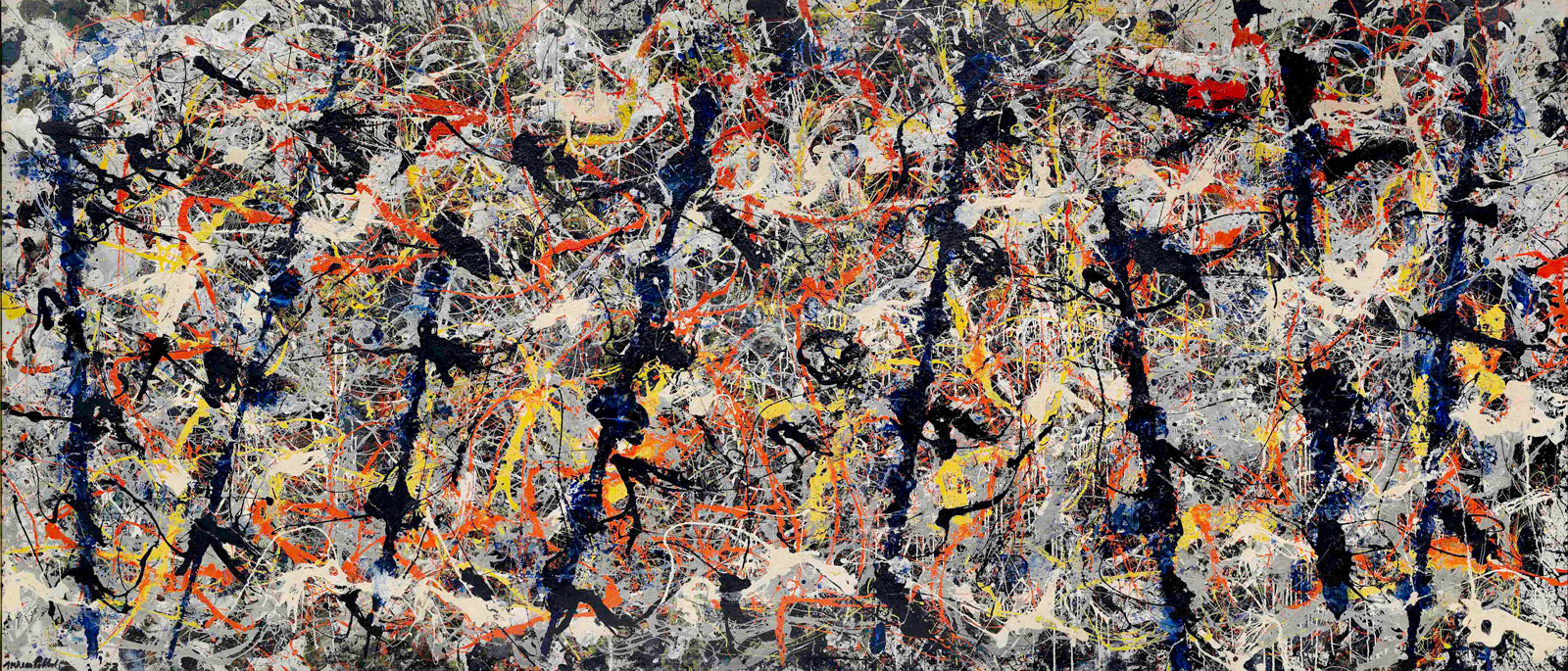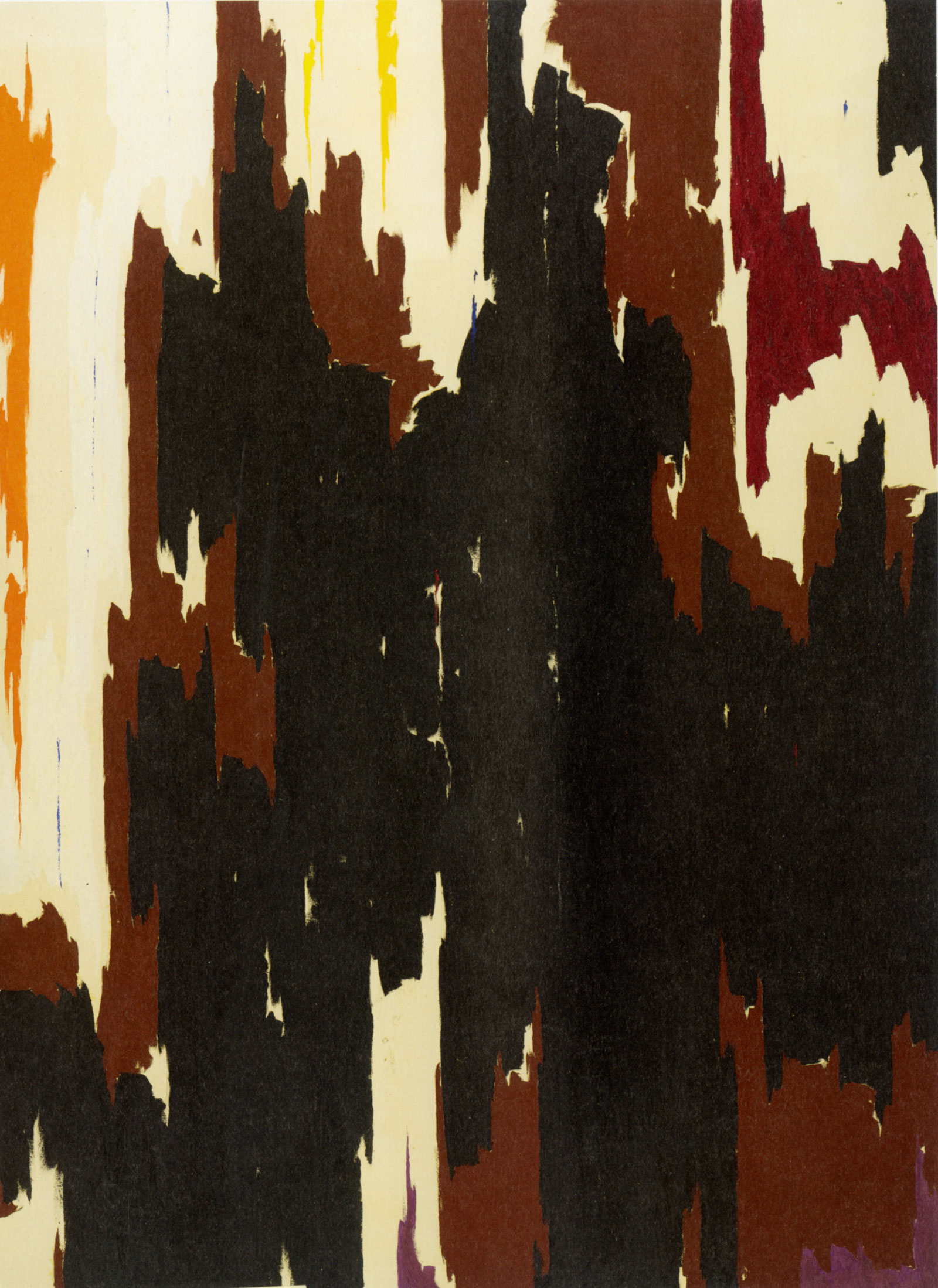With thirty-six artists represented by over 150 paintings, sculptures, and photographs on loan from public and private collections around the world, the Royal Academy’s stupendous survey of Abstract Expressionism is the first on this scale staged in Britain for almost six decades. That it succeeds in almost every way in shaping the all-but-indefinable phenomenon of Abstract Expressionism into a coherent story is to the credit of the curator David Anfam, who has risen to the challenge by taking two different approaches to its selection and installation.
On the one hand, he creates a succession of substantial monographic displays devoted to the five artists he regards as the pioneers—Arshile Gorky, Jackson Pollock, Mark Rothko, Clyfford Still, and Willem de Kooning. At the same time, he steps back to give us an overview of a broader and more disparate selection of painters and sculptors, which allows us to look at the aims, values, and crosscurrents that linked them all together, however loosely. Thus, while the heart of the show consists of a succession of connected galleries in which are displayed the work of the big five, there is a second suite of less imposing galleries, parallel to the primary route, in which Anfam hangs Barnett Newman, Franz Kline, Robert Motherwell, Lee Krasner, Joan Mitchell, Mark Tobey, Sam Francis, and other lesser names—sometimes in themed displays with titles like “Gesture vs. Colour” and “The Violent Mark.” The odd man out in all this is de Kooning, who gets a display to himself in the secondary rooms—in a spur to the gallery adjoining Rothko’s, but not on the main enfilade.
Unlike Impressionism or Cubism, Abstract Expressionism was not a style or a movement. What the five pioneers had in common was not a shared aesthetic, a painting technique, or a manifesto but a sense of the overwhelming importance of art, a bedrock belief in the power of painting to address ideas and emotions at the deepest level. That sense of importance was there from the beginning. What is striking about the first gallery—devoted to artists’ portraits and works from the 1930s—is not how labored the early efforts Pollock, Rothko, and the others are, but the sheer chutzpah the young artists had in asking gallerists and the public to accept their pictures as finished works of art at all.
In Male and Female (1942-1943), Pollock’s drab industrial colors, coagulated paint surface, and heavy impasto are of a piece with the picture’s impenetrable, almost Kabbalistic imagery. The same aura of enigma—the use of symbols and signs that elude our ability to decipher meaning—is there too, in Still’s enigmatic study of the entangled bodies of a nude man and woman, the rough outlines of their blank faces and elongated limbs ragged at the edges, like pieces of torn paper. The metaphor of gashing or flaying returns when we come to a stunning gallery filled with Still’s huge abstract canvases from the Fifties. But now, the jagged rivulets of paint call to mind geological formations and shifting tectonic plates—scarred landscapes breaking apart to reveal gaping wounds deep beneath the earth’s surface.
In his catalog essay Anfam reminds us that these artists did not work in isolation. They were part of a generation whose art must be understood within its historical setting. The majority grew up poor, lived through the Great Depression, the Spanish Civil War, World War II, the concentration camps, the Atomic Bomb, and the start of the cold war. Only rarely did painters or sculptors associated with Abstract Expressionism respond directly to current events. But I think they did respond, by conveying ideas and feelings that might otherwise be inexpressible in words through a universal language of abstraction.
And so, as early as 1936, Rothko painted Interior, in which he depicted the façade of an Italianate baroque church with small figures passing through its open door into the darkness within. No one who first saw the little picture could have guessed that the connotations of a great door opening into an ecclesiastical sanctum would reverberate in the numinous squares and rectangles he would paint for the rest of his life—but it is an early intimation in his art of the presence of things unseen, access to knowledge denied, spiritual consolation withheld.
Or take Pollock, who in 1943-1944 painted his nineteen-foot-long Mural by pouring and dripping, brushing and spattering dark red, dirty green, and off-yellow paint onto canvas. Stand close to the ten-foot-high procession of giant humanoid stick figures moving inexorably across the canvas and look up. At once you see that whatever else he is doing in the painting, Pollock is describing what it is like to feel overwhelmed and confused, a frightened child confronting inexorable adult forces the can be neither understood nor controlled.
Advertisement
Mural’s emotional power is drawn not from literature, poetry, advertising, or film but directly from the artist’s unconscious. For the first time in American art we come face to face with the artist’s ego, in this case one belonging to an emotionally damaged, depressive alcoholic. But to put that ego at the center of his art, Pollock needed to cling to a profound conviction of that art’s transcendent importance. This need for validation was at the heart of Pollock’s tragedy. For during his years of sobriety, he evolved the lyrical and refined form of abstraction you see in Phosphorescence, a delicate skein of dripping silver, white, and black aluminum paint painted in 1947.
At the RA, the picture is hung so that we can look across the adjoining gallery to his late Blue Poles (1952), on loan from the National Gallery of Australia in Canberra. Now, eight misshapen blots of indigo paint are placed at intervals across the intricate web of yellow and orange drips, smears and splatters. There is no way to read these “poles” as emerging organically from the whirling chaos underneath—they were added to the painting at a late stage, gross intrusions superimposed like giant handbrakes or railway spikes on the picture surface to impede the eye’s journey across it.
If, as I think, it is legitimate to talk about the meaning of the picture, then it’s subject is the fissure that had opened in Pollock’s mind between his need to create and his compulsion to destroy. Put crudely, before he added the blue poles the painting was too decorative, too far removed from his deepest reality, the darkness within himself.
No period in history, including the High Renaissance in Italy, produced more than half a dozen artists in the league occupied by these core Abstract Expressionists. That raises a problem in a show that casts its net wide. A surprisingly large number of the other twenty-five artists in it are household names, and all produced work that was significant—just not quite as extraordinary as the most important American art of the twentieth century.
As seen in this show, Pollock’s towering stature diminishes even the most substantial of his contemporaries, both because of the scale and number of pictures shown, and because his art changes and develops in a way that is not true even of Rothko’s. The artist who suffers most from his presence is de Kooning. The elegant, luscious frenzy of de Kooning’s painting gives as much pleasure as ever, but the smaller, drawing-room scale and presence of the image (even if scarcely legible) somehow domesticates the pictures in a way that is never true of Pollock, or for that matter Still or Rothko.
This was not of course the curator’s intention and yet it is unavoidable. Others who suffer are David Smith, whose surrealist sculptures were not fully abstract until late in his career, and Barnett Newman, whose subtlety reads as weakness seen against the intimidating force of some of the artists in nearby galleries. Sam Francis and Mark Tobey need to be shown on their own. In a show like this, their work hardly registers.
David Anfam does for Abstract Expressionism what Douglas Cooper did for Cubism in his great 1983 exhibition “Essential Cubism.” Like Cooper’s, his judgment is severe but utterly coherent. My one reservation is that the show is ragged at the edges. It need not have included works on paper or photographs, because by the time the visitor reaches those galleries he or she will be in no shape to take them in. Never mind. In this country, at least, it’s the exhibition of the year.
“Abstract Expressionism” is on view at the Royal Academy of Arts London through January 2. It will be shown at the Guggenheim Museum in Bilbao from February 2 to June 4, 2017.

